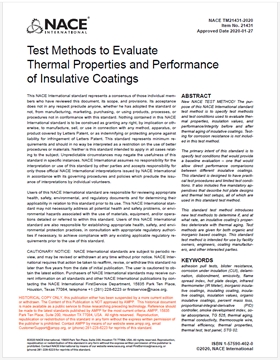Search
Military
View as
Sort by
Display
per page
Decision Making Process for Applying Military Coatings (Carc-Chemical Agent Resistant Coatings, Epoxies, Urethanes, and Others
Product Number:
41211-614-SG
Publication Date:
2011
$20.00
Detection of Surface Contamination During a Scheduled Inspection and Repair Investigation
Product Number:
41209-488-SG
Publication Date:
2009
$20.00
Effect of Feathering on Coating Performance
Product Number:
51219-181-SG
Publication Date:
2019
$20.00
Effectiveness of Epoxy and Moisture-Cure Polyurethane Coatings in Corrosion Mitigation of Embedded Rebar- an Experimental Study
Product Number:
51320-14405-SG
Publication Date:
2020
$20.00
Holiday Detection by Imaging Fluorescent Coatings
Product Number:
41206-245-SG
Publication Date:
2006
$20.00
Infrastructure Corrosion Issues and Solutions on Military Bases
Product Number:
51317--9212-SG
ISBN:
9212 2017 CP
Publication Date:
2017
$20.00
Institutionalizing Corrosion Prevention and Control in the USAF
Product Number:
41216-990-SG
Publication Date:
2016
$20.00
NACE SP0188-2024, Discontinuity (Holiday) Testing of New Protective Coatings on Conductive Substrates
Product Number:
NACE SP0188-2024
Publication Date:
2024
$109.00
NACE SP0716-2023, Soluble Salt Testing Frequency and Locations on Previously Coated Surfaces
Product Number:
NACE SP0716-2023
Publication Date:
2023
$109.00
NACE TM21431-2020, Test Methods to Evaluate Thermal Properties and Performance of Insulative Coatings
Product Number:
21431-2020
Publication Date:
2020
$179.00
National Shipbuilding Research Program Surface Preparation and Coatings Panel 2018 Update
Product Number:
51218-140-SG
Publication Date:
2018
$20.00












